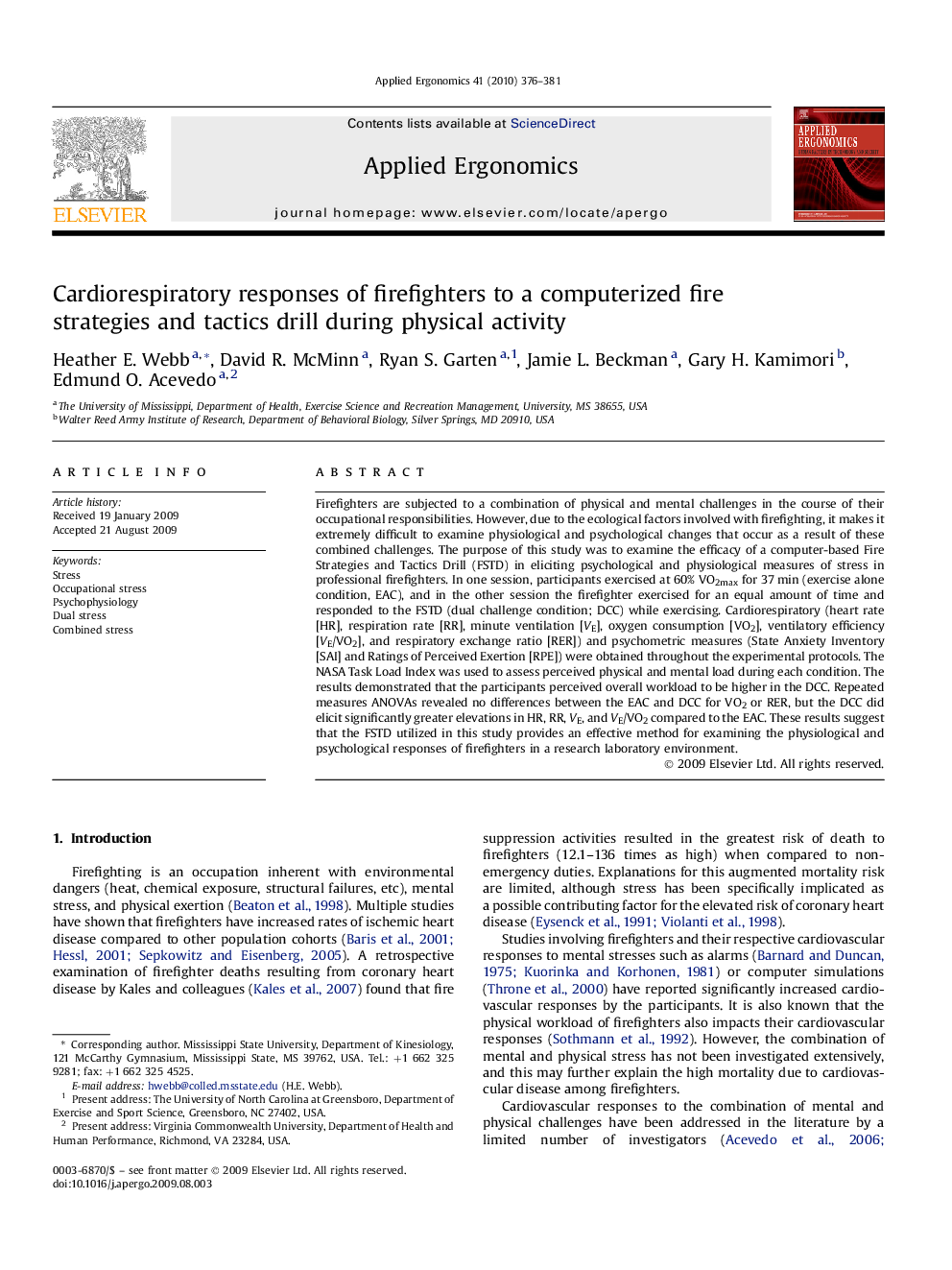| Article ID | Journal | Published Year | Pages | File Type |
|---|---|---|---|---|
| 549546 | Applied Ergonomics | 2010 | 6 Pages |
Firefighters are subjected to a combination of physical and mental challenges in the course of their occupational responsibilities. However, due to the ecological factors involved with firefighting, it makes it extremely difficult to examine physiological and psychological changes that occur as a result of these combined challenges. The purpose of this study was to examine the efficacy of a computer-based Fire Strategies and Tactics Drill (FSTD) in eliciting psychological and physiological measures of stress in professional firefighters. In one session, participants exercised at 60% VO2max for 37 min (exercise alone condition, EAC), and in the other session the firefighter exercised for an equal amount of time and responded to the FSTD (dual challenge condition; DCC) while exercising. Cardiorespiratory (heart rate [HR], respiration rate [RR], minute ventilation [VE], oxygen consumption [VO2], ventilatory efficiency [VE/VO2], and respiratory exchange ratio [RER]) and psychometric measures (State Anxiety Inventory [SAI] and Ratings of Perceived Exertion [RPE]) were obtained throughout the experimental protocols. The NASA Task Load Index was used to assess perceived physical and mental load during each condition. The results demonstrated that the participants perceived overall workload to be higher in the DCC. Repeated measures ANOVAs revealed no differences between the EAC and DCC for VO2 or RER, but the DCC did elicit significantly greater elevations in HR, RR, VE, and VE/VO2 compared to the EAC. These results suggest that the FSTD utilized in this study provides an effective method for examining the physiological and psychological responses of firefighters in a research laboratory environment.
